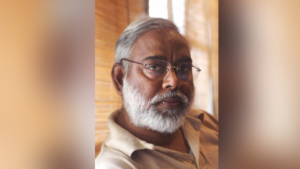In 19th century northeast India, extraction began under colonial rule after the discovery of oil at Digboi (Assam) in 1862.
When colonial rule ended in 1947, the Indian government inherited multiple oilfields in Assam from the colonial regime. But, unfortunately, despite the change in administration, the Indian state’s perspective and policies remain the same – grounded in the logic of extraction of resources such as oil, coal, and timber for revenue generation.
Assam in the late 1970s and 80s, witnessed a significant number of resistance movements against these Indian state-led developmental interventions based on an expansion of oil and coal extractions. It was also the time when Naga insurgency-led extremism was at its peak, and oil extraction in the region was one of the core agendas of the Assam Accord of 1985. But, the indigenous communities (such as the Naga tribes and Assamese people, among others) of the Northeast have always been suspicious of the Indian state for being only interested in extracting resources that are not seen to be in the welfare of the local communities.
The slogan, “Tez dim, tel nidiu” (“We shall give our blood, not oil”), of the 1980s, continues to inform protests and public gatherings, and underscores the mistrust towards the state and an affirmation of regionalist sentiments against state-led oil extractions and outsourcing of resources to the other regions.
It is under these socio-economic and political circumstances that in the late 1990s and 2000s, the rise of revolutionary armed groups such as the United Liberation Front of Asom (ULFA) has been intimately connected to resistance movements against oil, coal, and tea extraction in the region. Much of this is in the form of armed groups such as the ULFA and National Socialist Council of Nagaland (NSCN) engaging in abduction of employees, torching oil tankers and attacking oil drilling facilities, among others.
In this way, extremism laced with the history of resistance from the indigenous communities against outsiders (both the Indian state and private companies) continues to make resource politics in the Northeast highly complex and layered.
The interplay of extremism and extractivism
On December 21, 2020, the United Liberation Front of Assam-Independent (ULFA-I) allegedly kidnapped two Quippo Oil and Gas Infrastructure Ltd employees, the private oil drilling company located in Changlang district of Arunachal Pradesh. The outfit demanded a ransom of Rs 20 crore for the duo’s release from the company and the government. However, on March 2, 2021, after four months of intense negotiations, the outfit agreed to release the employees when the company assured the armed group of creating 5,000 jobs for local youths in exchange for a ransom demand of 20 crore.
Accordingly, the abducted employees were released in April 2021, but within two weeks of their release, the ULFA-I on August 21 again abducted three ONGC employees from Lakwa oilfield in Sibsagar, Assam. On April 24, 2021, security forces rescued two of the employees, and another one was released on May 22 by the outfit after the intervention of the Assam government.
Armed groups justify this extortion and abduction by claiming that they represent the indigenous communities and their claims over natural resources such as oil, asserting that it is their (armed groups) legitimate right to get a fair share of benefits from resource extraction. Whether the indigenous communities consider the armed groups their representative is a politically charged and contested affair in the region.
However, regardless of that, the call to arms has derived social legitimacy over the years in the name of protecting the interests of indigenous communities. It is in this context that armed groups have used job creation as a form of compensation, when their initial demand of a ransom of 20 crore was denied. Job creation, in this respect, is a potent political tool deployed to gain sympathy from the indigenous communities and for the armed groups to depict itself as the ultimate protector of these communities.
Nonetheless, in practice, the extremist armed groups have contributed to exploiting the regionalist sentiments of the indigenous communities in the name of protecting their interest. A closer look at the larger resource politics in the region reveals that the armed groups are also involved in facilitating the exploitation of indigenous communities, whom they claim to represent to pursue their selfish interests.
In fact, as long as the armed groups receive their share of benefits, they do not usually confront or stop oil companies from undertaking resource extractions, indicating the implicit yet deep-rooted nexus between the armed groups and the oil companies.
The layers of resource politics
The two recent kidnapping cases underline how closely the armed groups are involved in everyday affairs of resource extraction in the region, although, it is one of the rarely discussed aspects of resource politics in the mainstream domain. It is also true that the overlap of resource extraction and extremism in the region has been responsible for not just the socio-economic exploitation of indigenous communities and ecological damage, but has also added to the growing militarisation of the region which has perpetuated rampant human rights violations. The extension of which has been that, in the northeastern region of India, even critical infrastructural projects such as bridges and highways have been mainly aimed to strengthen the logistic operation of extractive activities and military power instead of prioritising local needs.
Over the last three decades, fuelled by the economic liberation of 1990s, reckless resources extractions in the region (especially in Assam and Arunachal Pradesh) has dramatically escalated, mainly due to the prioritisation of revenue generations by the state. But, the quest for generating royalties by the state has come with continuous privatisation of a massive numbers of oilfields attributed to the large-scale ecological destructions, dispossession, and socio-economic exploitation of the local communities across the region against which indigenous civil society organisations (CSOs), such as the All Assam Students’ Union (ASSU), have been protesting since the early 1980s.
The state has always attempted to portray all forms of these rampant resource extractions as a symbol of development, and the extremist armed groups have also consistently tried to justify their activities as a sign of resistance against the outsiders. However, on the ground, the promise of development by the Indian state has never reached local communities, nor have insurgent armed groups-led extremism liberated the indigenous communities despite the years of violence, protests, and sacrifices.
For instance, at the peak of COVID-19, the indigenous/local communities were left to their own devices by the state due to the weak health system and lack of locally oriented basic infrastructure such as motor vehicle roads connecting remote villages across the northeastern states. This exposes the deep cracks in the development debates of the northeastern region; about how the state has been largely focusing on extracting resources over development in health, education, and basic infrastructure etc. which can improve the quality of life in local communities.
The increased push toward resource extractions, thus is undoubtedly a major socio-economic, ecological, and political challenge in the Northeast involving multiple stakeholders such as the indigenous communities, the state and the non-state actors such as oil companies and extremist armed groups. Yet, one of the fundamental questions associated with resource extraction that remain blurred and contested in the region has been about who all are the actual stakeholders/participants because both the state and armed groups typically do not grant the indigenous communities a seat at the table, even though they both posture as working in the interests of indigenous communities.
An uneasy peace
Recently, on May 27, 2021, the newly elected chief minister of Assam, Himanta Biswa Sarma, announced that the state government has approved the enhancement of crude oil production at Numaligarh Refinery (NRL) from 3 million metric tonnes (MMT) to 9 MMT. The chief minister also disclosed that at present government receives Rs 500 crore from NRL as royalty, and through the increase the royalty would rise to Rs 1,500 crore annually.
This announcement comes at a time when earlier on May 15, 2021, owing to the COVID-19 pandemic, the ULFA-I had declared a unilateral ceasefire for three months. The ceasefire worked in favour of oil companies and the government to avoid immediate and explicit reactions from the extremist armed groups.
Thus, the last two months have been critically eventful for the extractive industry in the northeastern region of India for three major reasons. First, the unexpected ceasefire has become an instant relief to the oil companies after facing increasing threats and kidnapping cases of its employees by armed groups over the last few years. Second, the government’s announcement to enhance oil production at NRL has come as a morale boost to the entire extractive industry of the region, which has been under close scrutiny and criticism from various corners since the Baghjan blowout of May 2020. Finally, the oil companies have found a new friend in the newly formed government of Assam, who is showing a keen interest in their agenda of expanding resource extractions in the region.
In the meantime, regardless of successive leadership and government changes in both New Delhi and at home, the conditions of indigenous communities living around extractive sites has worsened, facing the toxic consequences of unprecedented resource extractions in the name of national development and revenue generations.
Moreover, unlike oil companies with an eye on revenues, there is nothing to anticipate for the indigenous communities except for more violence and further marginalisation. This is because the ceasefire declared by the ULFA-I is likely to be only brief respite and not a permanent termination of the extremism or violence, and the plans to enhance oil productions by the state will only bring another Baghjan blowout, not the development they seek.
(Manta Wangsu is a PhD scholar at Indraprastha Institute of Information Technology, Delhi. Courtesy: The Wire.)




